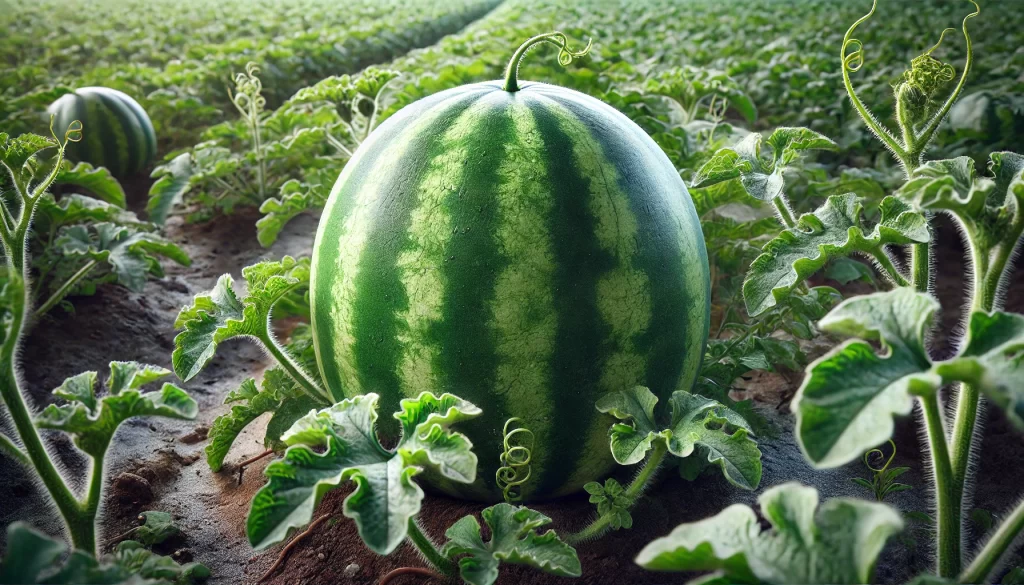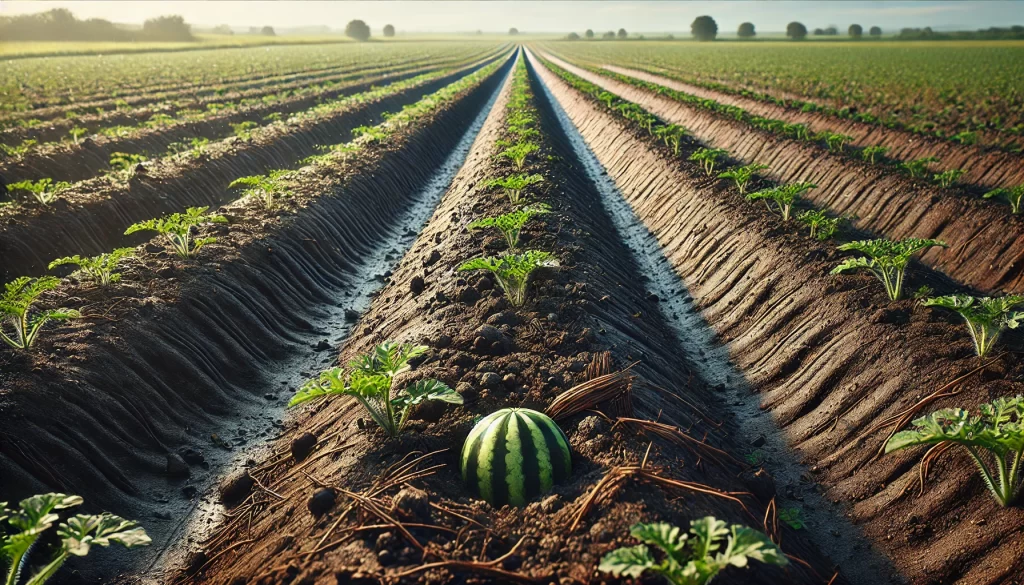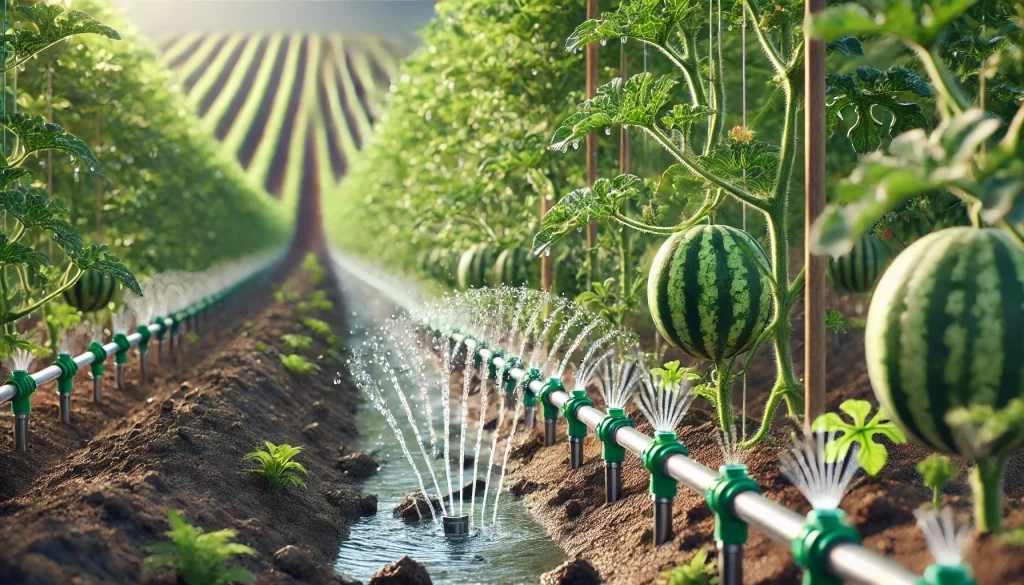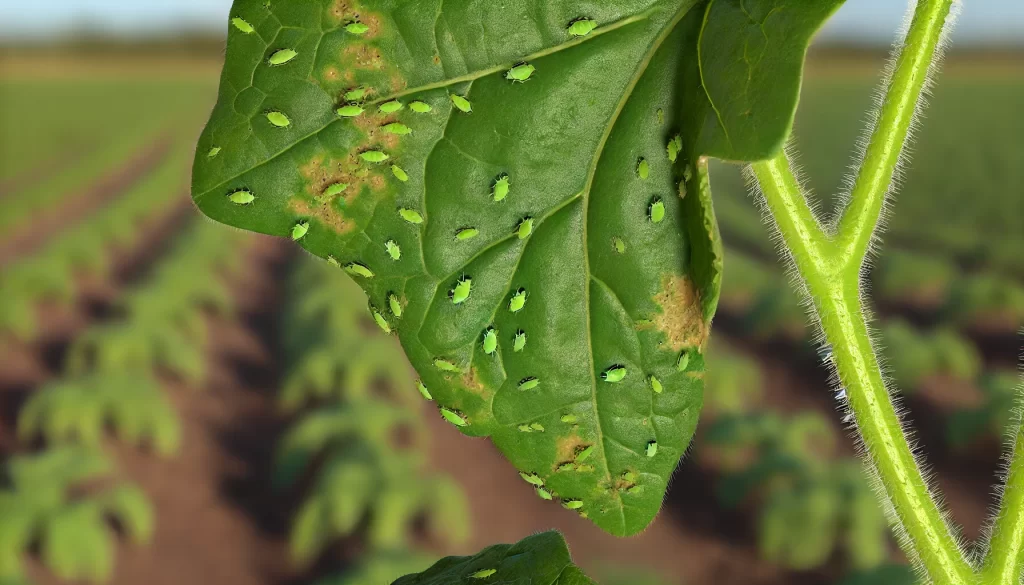Watermelon Crop Management
Introduction to Watermelon Cultivation
Watermelon (Citrullus lanatus) is a refreshing and highly demanded fruit, especially during the summer months. Its cultivation is popular in many regions around the world due to its economic value and the relative ease of its management. This article provides a comprehensive guide on watermelon crop management, from site selection to harvest and post-harvest handling, with the goal of maximizing fruit production and quality.

Site Selection and Soil Preparation
Ideal Climatic Conditions
Watermelon thrives in warm, sunny climates with optimal temperatures ranging between 25°C and 30°C. It does not tolerate frost well and prefers low relative humidity, which helps prevent foliar diseases. Watermelon requires a long, frost-free growing season to develop properly.
Soil Selection
Watermelon cultivation prefers well-drained, deep soils with good organic matter content. Sandy or sandy-loam soils are ideal as they allow good root system development. The soil pH should range from 6.0 to 7.0. It is crucial to avoid heavy or poorly drained soils, which can retain excess water and promote disease development.
Soil Preparation
- Deep Tillage: Perform deep tillage to improve soil structure and encourage root growth.
- Incorporation of Organic Matter: Add well-decomposed compost or manure to enhance soil fertility and water retention capacity.
- Raised Beds Formation: In soils with drainage issues, it is recommended to form raised beds to improve drainage and reduce the risk of waterlogging.

Watermelon Planting and Sowing
Sowing Methods
Watermelon can be sown directly in the field or by transplanting seedlings produced in a nursery. Direct seeding is common in warm climates, while transplanting is preferred in regions with shorter growing seasons.
Seed Preparation
- Seed Selection: Use high-quality certified seeds to ensure good germination and plant development.
- Seed Treatment: If necessary, treat seeds with fungicides to prevent diseases during germination.

Direct Sowing
- Sowing Depth: Seeds should be sown at a depth of 2 to 3 cm, with a spacing of 1.5 to 2 meters between plants and 2.5 to 3 meters between rows.
- Sowing Conditions: Sowing should be done when soil temperatures are above 18°C to ensure rapid and uniform germination.
Transplanting Seedlings
- Seedling Production: Seeds are sown in germination trays under controlled conditions. Seedlings are ready for transplanting when they have 3 to 4 true leaves.
- Field Transplanting: Transplant during the cooler hours of the day and water immediately afterward to reduce water stress.
Irrigation and Water Management
Watermelon Water Requirements
Irrigation is crucial for watermelon development, especially during flowering and fruit development. Water requirements vary depending on the growth stage:
- Establishment: Moderate irrigation to ensure uniform germination and establishment of vigorous seedlings.
- Vegetative Growth: Maintain consistent irrigation to promote healthy plant growth and flower formation.
- Fruit Development: Increase irrigation frequency during fruit formation and growth to ensure good size and quality. It is important to reduce irrigation in the final maturation stage to improve flavor and sugar concentration.
Irrigation Systems
- Drip Irrigation: The most efficient system for watermelon cultivation, as it delivers water directly to the root zone, minimizing losses through evaporation.
- Sprinkler Irrigation: Although less efficient, it is used in large fields, but care must be taken to avoid excessive leaf wetting, which could encourage disease development.

Watermelon Fertilization
Nutritional Requirements
Watermelon is nutrient-demanding, especially in nitrogen, phosphorus, and potassium. A balanced fertilization plan is essential to ensure vigorous growth and high-quality fruit production.
- Nitrogen (N): Promotes vegetative growth and leaf formation.
- Phosphorus (P): Essential for root development and flowering.
- Potassium (K): Enhances fruit quality, disease resistance, and storage capacity.
Fertilization Plan
- Base Fertilization: Incorporate an NPK mix before sowing or transplanting to prepare the soil.
- Topdressing Fertilization: Apply fertilizers at various stages of the crop cycle, adjusting doses based on soil analysis and plant development.
- Foliar Fertilization: Use foliar applications of micronutrients to correct specific deficiencies and improve crop yield.

Pest and Disease Management
Common Pests
Pest management is essential to maintain the health of watermelon plants and ensure the production of high-quality fruits. The most common pests include:
- Aphids: Affect young shoots and can transmit viral diseases.
- Thrips: Small insects that feed on sap, causing deformities in leaves and flowers.
Control Strategies
- Regular Monitoring: Inspect plants regularly to detect pests in a timely manner.
- Biological Control: Introduction of natural predators such as ladybugs and parasitic wasps.
- Insecticide Application: Use specific products following technical recommendations to minimize environmental impact and avoid resistance.

Common Diseases
Diseases can significantly affect watermelon crop productivity. The most common ones include:
- Powdery Mildew (Erysiphe cichoracearum): A fungus that affects leaves, forming a white layer that reduces photosynthesis and plant vigor.
- Anthracnose (Colletotrichum spp.): A disease that causes dark spots on fruits and leaves, reducing quality and yield.
Control Strategies
- Sanitary Management: Remove diseased parts to reduce the spread.
- Fungicide Use: Apply preventive and curative fungicides under conditions favorable for disease development.
- Crop Rotation: Avoid planting watermelon in the same area for several consecutive years to reduce disease pressure.
Harvest and Post-Harvest Management
Maturity Indicators
Watermelons are harvested when the fruits have reached physiological maturity, which can be determined by:
- Hollow Sound: When tapping the watermelon lightly, it should produce a hollow sound, indicating it is ready for harvest.
- Rind Color: The rind should change from a bright green to a more opaque tone, and the area in contact with the ground should turn yellowish.
- Dry Tendril: The tendril closest to the fruit should be completely dry, which is an indicator of maturity.
Harvesting Techniques
Harvesting is done manually by cutting the fruits with a knife or scissors, leaving a small stem. It is important to handle the fruits carefully to avoid damage that could reduce their shelf life.

Post-Harvest Handling
Post-harvest handling is crucial to maintain the freshness and quality of watermelons until they reach the final consumer. Recommended practices include:
- Washing and Grading: Remove impurities and grade the fruits according to their size, color, and quality.
- Storage: Keep the fruits in a cool place, preferably at a temperature of 10-15°C, to prolong their shelf life.
- Transportation: Transport the fruits in ventilated boxes to avoid physical damage and preserve their quality during transport to the market.
 AgronoBlog – Agriculture Blog
AgronoBlog – Agriculture Blog 
